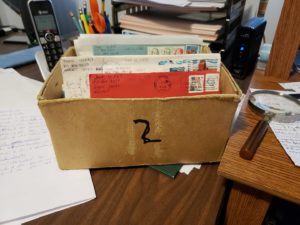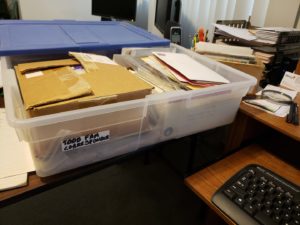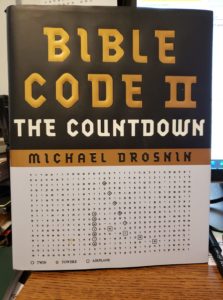
When I made my blog post on Friday, I had intended on the post for Monday to be the next in my series on racism, moving on from how to combat racist acts to how to end racism. But that’s not happening due to a change in plans.
You see, on Friday, while working in the storeroom, moving a smallish box of books, I caught my leg on a trunk on the floor and took a tumble forward. I dropped the box of books as I was going down to free up my hands to brace against the fall. I did this on another box of books that was on the floor in front of me.
A fall is never good, but I was glad this was a minor one. It’s the first one in the house, my several others having been outside. I tried to scoot a stick out of the road while walking and went down. I slipped on leaves in the woods and went down. I slipped on a slick driveway and went down. I slipped on an icy driveway at that neighbors and went down hard. That was in February 2018, and I haven’t fully healed from that. Otherwise, the falls outside didn’t do much damage. An hour or so after those others I was back about my tasks. I figured the one in the basement would be the same.

Alas, I soon after went upstairs to fix lunch and thought to myself, “Why is my knee hurting so much?” Then I remembered: I fell fifteen minutes ago. Ah, well, no big deal. I took an Aleve, ate lunch, then went to the sunroom to read. While there, my knee kept hurting. I looked down at it to check for swelling and saw that my leg was bleeding, down near the ankle. Obviously that came from raking across the trunk as I went down. Naturally it was my leg with the bad knee that I caught on the trunk.
I cleaned and bandaged the wound with a gauze pad and went back to my afternoon activities. Slowly my knee got worse, the pain being in unusual parts of the knee. And my leg started hurting below the knee all the way down from the ankle. Not the abrasion, which I could barely feel, but the shin and calf. It felt muscular, not skeletal. I was certain it wasn’t a break. Muscles and tendons or ligaments had suffered trauma. Just sitting in my reading chair in the living room was painful—as was lying on the floor on my stomach. Another Aleve didn’t do anything.
Slowly it got worse as evening wore on, the main pain being in the lower leg, not the knee. I went to bed a little early but couldn’t sleep. I used a topical muscle rub that may have helped some. But an hour and a half of tossing and turning caused me to move to my reading chair, then out to the sunroom. Eventually I was tired enough to sleep through the pain. But that was at least an hour after I took a hydrocodone pill.

Obviously my normal heavy yardwork on Saturday was out. I took it easy, reading, and transcribing letters. Same for Sunday, with some on-line church and Life Group thrown in. Came Saturday evening and I thought the leg felt better. Come the night and the pain was as bad as Friday night. I finally went to The Dungeon and laid back in the recliner. Finding a comfortable position was still hard, but I think I slept a little better than on Friday.
What does that have to do with my intended blog post? With my leg in more or less constant pain, I didn’t think I would be able to concentrate on the important topic of ending racism. So you have this fluff piece instead. The letter transcription was an enjoyable diversion. I completed the 28 letters I found a few weeks ago in an unexpected place in my mother-in-law’s things, all letters to her from our Kuwait years, all but a couple from Lynda to her mom. While I shouldn’t have, I decided to drag out the larger bin that has letters from Saudi and Kuwait. Actually, I had to pull three different bins/boxes off the shelf to find the rest of the letters from the Kuwait years. I will consolidate all of them into a single box, properly label it with large, black lettering, and put it where I’ll never have to hunt for it again.
Letter transcribing doesn’t get the weeds pulled, or cut posts for the completion of the fort I’m building with the grandkids, or trim the bushes in the front yard. It doesn’t burn off the pounds I so definitely need to lose. It doesn’t get my novel-in-progress back to where I actually see progress. It provides great satisfaction for me, however. And it stirs the memory, as I read through things I experienced and documented but now don’t actively remember.
As of Sunday evening the text file of letters was up to 49 pages and just under 30,000 words. So far fewer than half the Kuwait letters are transcribed, and the Saudi letters are untouched. This will be a long project, most likely multi-year. What will be produced in the end is not yet clear. But at least I see hours and hours of what I would call oddball satisfaction for the transcriptionist.




